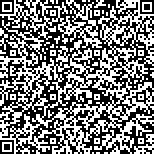本文已被:浏览 76次 下载 119次
投稿时间:2023-09-10 网络发布日期:2024-04-20
投稿时间:2023-09-10 网络发布日期:2024-04-20
中文摘要: 目的 对比在多发性肋骨骨折患者中采用超声引导下胸椎旁神经阻滞(TPVB)和肋间神经阻滞(INB)的镇痛效果和安全性。
方法 选择2022年1月至2023年6月在新疆医科大学第五附属医院就诊的单侧肋骨骨折行切开复位内固定术治疗的患者。共纳入满足纳入和排除标准的82例患者,采用随机数字表将患者分为TPVB组(全麻后给予0.33%罗哌卡因20 mL行TPVB)和INB组(全麻后给予0.33%罗哌卡因5 mL行INB),每组41例。使用视觉模拟评分(VAS)评估患者疼痛,记录镇痛药物用药时间及剂量。观察患者术后72 h肺部及非肺部并发症情况。
结果 Kaplan-Meier曲线显示,两组患者首次使用镇痛药的时间比较差异有统计学意义(χ2=6.125, P=0.013)。〖JP〗术后24 h和48 h内TPVB组有镇痛需求患者比例均显著低于INB组患者(19.51% vs 36.59%, χ2=4.895, P=0.027; 41.46% vs 63.41%, χ2=3.961, P=0.047),TPVB组患者25~48 h使用镇痛药物总剂量显著低于INB组患者[(13.78±9.48)mg vs (26.20±12.31)mg, t=3.527, P<0.01]。两组术后所有时间点静息时和咳嗽时的VAS评分均显著下降(P<0.01),且TPVB组术后6、18 h静息时VAS评分低于INB组,术后1、6、18 h咳嗽时VAS评分低于INB组,差异有统计学意义(P<0.05)。两组患者肺部及非肺部并发症发生率比较差异均无统计学意义(P>0.05)。
结论 相较于INB,超声引导下的TPVB可有效缓解单侧多发性肋骨骨折患者的疼痛并减少阿片类药物消耗。
Abstract:Objective To compare the analgesic effects and safety of ultransound-guided thoracic paravertebral block (TPVB) and intercostal nerve block (INB) in patients with unilateral multiple rib fractures.
Methods Patients with unilateral multiple rib fractures treated by surgery at the Fifth Affiliated Hospital of Xinjiang Medical University from January 2022 to June 2023 were selected. A total of 82 patients who met the inclusion and exclusion criteria were included,and divided into TPVB group (20 mL of ropivacaine 0.33% for TPVB after general anesthesia) and INB group (5 mL of ropivacaine 0.33% for INB after general anesthesia) by random number table method, with 41 patients in each group. The visual analog score (VAS) was used to assess patients pain, and the time and dosage of analgesics were recorded. The pulmonary and non-pulmonary complications within 72 hours after operation were observed.
Results Kaplan-Meier curves showed that there was a statistically significant difference in first use time of analgesics between the two groups (χ2=6.125, P=0.013). The proportion of patients with analgesia demand in the TPVB group was significantly lower than that in the INB group within 24 hours after operation (19.51% vs 36.59%, χ2=4.895, P=0.027)and 48 hours after operation(41.46% vs 63.41%, χ2=3.961, P=0.047), and the total dose of analgesics used 〖LM〗in the TPVB group 25-48 hours after operation was significantly lower than that in the INB group [(13.78±9.48) mg vs (26.20±12.31)mg, t=3.527, P<0.01]. VAS scores at rest and during coughing at all time points after surgery significantly decreased in both groups (P<0.01). At 6 and 18 hours postoperatively, the VAS score at rest in the TPVB group was lower than that in the INB group, and at 1, 6, and 18 hours postoperatively, the VAS score when coughing in the TPVB group was lower than that in the INB group, with statistically significant differences (P<0.05). There was no statistically significant difference in the incidence of pulmonary and non-pulmonary complications between the two groups (P>0.05).
Conclusion Ultrasound-guided TPVB can effectively alleviate pain and reduce opioid consumption in patients with unilateral multiple rib fractures compared with INB.
keywords: Multiple rib fracture Analgesia Thoracic paravertebral block Intercostal nerve block Ultrasonic guidance Pulmonary complication
文章编号: 中图分类号:R614.4 文献标志码:A
基金项目:
| 作者 | 单位 |
| 李晓芳1 | 1. 新疆医科大学第五附属医院麻醉科,新疆 乌鲁木齐 830011; |
| 赵莉2 | 2. 哈密市中心医院麻醉科,新疆 哈密 839000; |
| 纪亚男1 | 1. 新疆医科大学第五附属医院麻醉科,新疆 乌鲁木齐 830011 |
| Author Name | Affiliation |
| LI Xiaofang*, ZHAO Li, JI Yanan | *Department of Anesthesiology, The Fifth Affiliated Hospital of Xinjiang Medical University, Urumqi, Xinjiang 830011, China |
引用文本:
李晓芳,赵莉,纪亚男.超声引导下胸椎旁神经阻滞与肋间神经阻滞在多发肋骨骨折患者中的镇痛效果对比[J].中国临床研究,2024,37(4):514-518.
李晓芳,赵莉,纪亚男.超声引导下胸椎旁神经阻滞与肋间神经阻滞在多发肋骨骨折患者中的镇痛效果对比[J].中国临床研究,2024,37(4):514-518.
